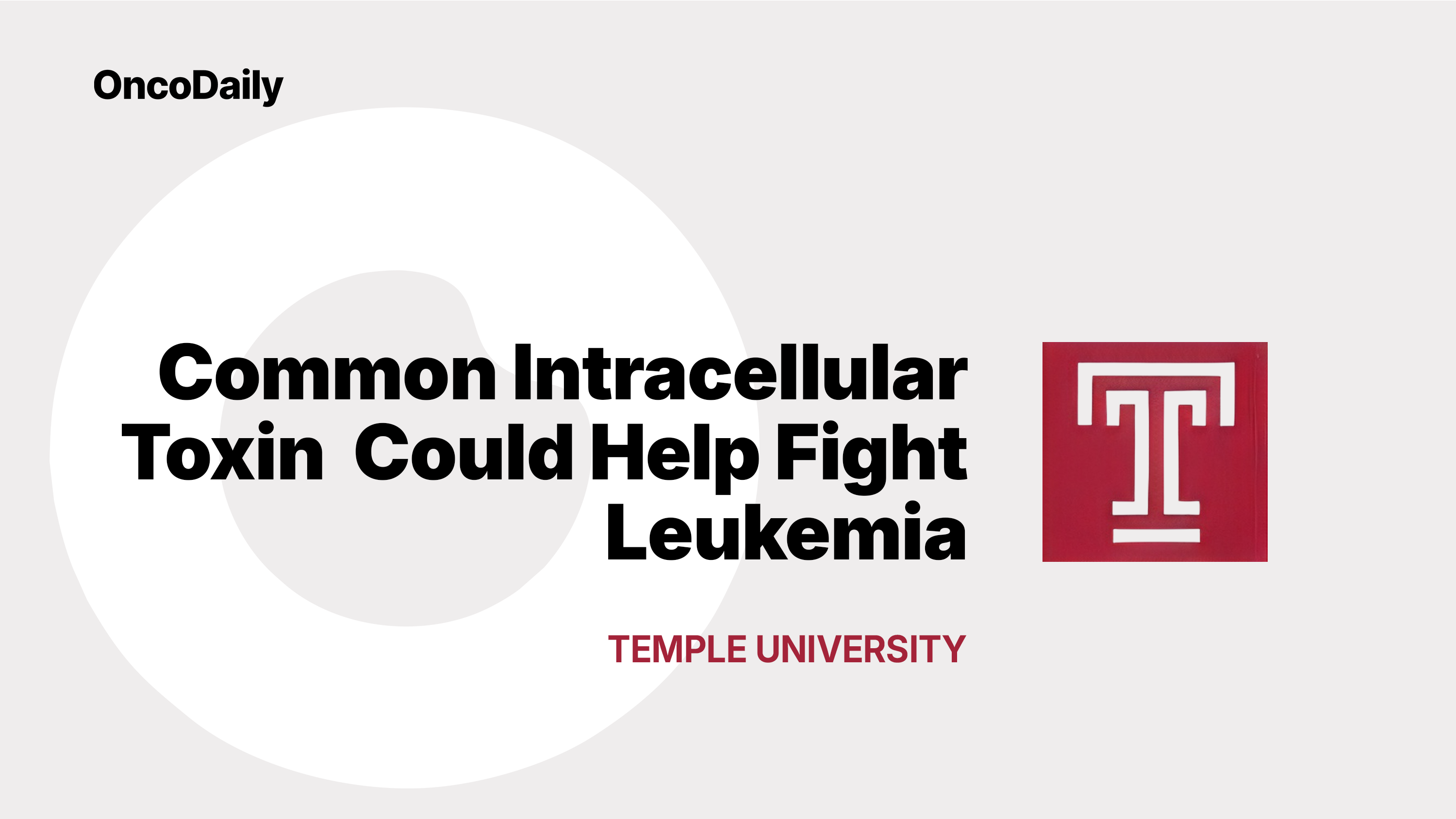All cells naturally produce formaldehyde as a byproduct of metabolism. To survive this toxic stress, both healthy and cancerous blood-forming cells rely on a built-in defense system. Now, scientists at the Lewis Katz School of Medicine at Temple University have discovered that leukemia cells generate far greater amounts of formaldehyde than normal blood cells and that to survive this stress, they rely on a unique protective mechanism.
The study, published online in the journal Leukemia, shows that in addition to the two known formaldehyde detoxifying enzymes, ADH5 and ALDH2, leukemia cells also depend on a DNA repair enzyme called Pol theta to recover from formaldehyde-induced damage. Disrupting this trio of protective proteins – especially Pol theta in combination with one of the detoxification enzymes – can cripple leukemia cells while sparing healthy ones, opening the way to the development of a novel therapeutic strategy.
“It was already known that hematopoietic stem and progenitor cells (HSPCs), which give rise to blood cells, use ADH5 and ALDH2 to detoxify formaldehyde and that they use a unique repair pathway to deal with DNA damage caused by formaldehyde,” said senior investigator Dr. Tomasz Skorski, MD, PhD, DSc, Director of the Fels Cancer Institute for Personalized Medicine at the Lewis Katz School of Medicine and co-leader of the Nuclear Dynamics and Cancer Program at the Fox Chase Cancer Center. “Our latest work reveals that when formaldehyde levels become high and cause excessive DNA damage, HSPCs also rely on Pol theta, which provides an additional tier of protection. This is true for both healthy and malignant cells.”
Dr. Skorski’s team was led by graduate student Jessica Atkins, whose recent PhD thesis centered on better understanding cellular defenses against formaldehyde. Using cell and animal models to explore how these protective mechanisms respond to stress, the researchers found that under normal physiological exposure to formaldehyde, Pol theta does not participate in cell defense with ADH5 or ALDH2 in HSPCs. Rather, the team found that Pol theta only steps in when formaldehyde levels spike, making it a crucial last line of defense to repair DNA damage inflicted by the toxin.
Next, the researchers investigated the effects of inhibitors of the three defense proteins. Whereas inhibition of ADH5 and ALDH2 resulted in the accumulation of formaldehyde in cells, the combination of Pol theta and ADH5 or ALDH2 inhibitors also enhanced DNA damage. In a mouse model of leukemia combinations of Pol theta and ADH5 or ALDH2 inhibitors lengthened survival time substantially.
Importantly, the inhibitors used for the study are already in various stages of clinical development. The ALDH2 inhibitor that was employed, disulfiram, is FDA-approved and widely used in the treatment of alcohol dependence.
“With the drugs already in use or being investigated in clinical trials, we are a big step closer to preparing a new therapeutic strategy for leukemia,” Dr. Skorski said.
Other researchers who contributed to the study include Anna-Mariya Kukuyan, Monika Toma, Umeshkumar Vekariya, Adam Karami, and Margaret Nieborowska-Skorska, all from the Fels Cancer Institute for Personalized Medicine at the Lewis Katz School of Medicine; Malgorzata Drzewiecka and Tomasz Sliwinski, from the Department of Molecular Genetics, Faculty of Biology and Environmental Protection at the University of Lodz, Lodz, Poland; Reza Nejati and Mariusz Wasik, from the Department of Pathology at the Fox Chase Cancer Center; Emir Hadzijusufovic and Peter Valent, from the Department of Internal Medicine I, Division of Hematology and Hemostaseology and the Ludwig Boltzmann Institute for Hematology and Oncology at the Medical University of Vienna, Vienna, Austria; and Tomasz Stoklosa, from the Department of Tumor Biology and Genetics at the Medical University of Warsaw, Warsaw, Poland.
About the Lewis Katz School of Medicine
Founded in 1901, the Lewis Katz School of Medicine at Temple University attracts students and faculty committed to advancing individual and population health through culturally competent patient care, research, education, and service. The School confers the MD degree; MS and PhD degrees in Biomedical Science; the MA in Urban Bioethics; the MS in Physician Assistant studies; a certificate in Narrative Medicine; a non-degree post-baccalaureate program; several dual degree programs with other Temple University schools; continuing medical education programs; and in partnership with Temple University Hospital, 40 residency and fellowship programs for physicians.
The School also manages a robust portfolio of publicly and privately funded transdisciplinary studies aimed at advancing the prevention, diagnosis, and treatment of disease — with specialized research centers focused on heart disease, cancer, substance use disorder, metabolic disease, and other regional and national health priorities. To learn more about the Lewis Katz School of Medicine, please visit: medicine.temple.edu.
More posts featuring Leukemia on OncoDaily.
